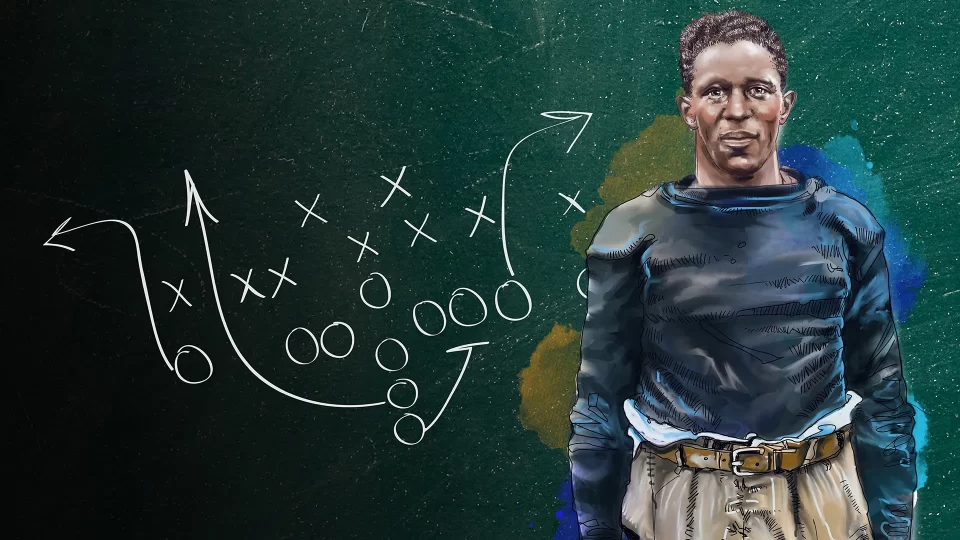Two Series Document Failed Diversity Rule
‘Little Change’ in Hispanic Media Representation
Why TV Reporters Insist on Tasting the Storm
In Fluke, Daniels to Lead White House Reporters
Longtime Columnist Leonard Pitts to Retire
In L.A., Latinos Question Station’s Commitment
Emmys Name Scott Top Emerging Journalist
Marcus Mabry Named a Digital SVP at CNN
Plante Saw Most TV News as ‘Headline Service’
Short Takes: Alex Wagner; LaFontaine Oliver; Charles M. Schulz; Natalie Morales; Rikers Island jail complex; access blocked to no-knock warrants in Miss.; Amara Walker; Ime Udoka and Brett Favre; wrongheaded coverage on dietary choices?; Kim Godwin, Chesley Maddox-Dorsey and Dawn Porter; diversity progress at the CW; “At Home in Asian America: Who Are We Becoming?”; dropping paywall at Chicago Sun-Times;
Hugo Balta; Sophia A. Nelson and Justin Fairfax; Aaron Judge vs. Barry Bonds; “Imagining the Indian: The Fight Against Native American Mascoting”; Kevin Powell; Willie Ratcliff; Walt Carr; DuJuan McCoy’s Multicultural Media Producing Program; Evrod Cassidy; Candice Wilder, Olivera Perkins, Stephanie Casanova and Lila Mills and “Signal Cleveland”; Chester Higgins Jr.; Jemele Hill and Sam Sanders; Brazil’s answer to “1619 Project”; Indigenous, Afro-descendant and Black communities in Latin America; Cuban journalists harassed into quitting; Ethiopians battle amid media blackout; press suppression in Liberia; wife of Angolan broadcaster assaulted.
Homepage photo: Fritz Pollard, first Black head coach in NFL history, illustrated by Todd Pendleton for USA Today’s graphic novel “A Brief History of Black NFL Coaches.”
Support Journal-isms(Credit: Washington Post/YouTube)
Two Series Document Failed Diversity Rule
” ‘Black Out’ is a series from The Washington Post examining why Black coaches continue to be denied head coaching positions in the NFL nearly 20 years after its implementation of the Rooney Rule, which is aimed at providing opportunities more equitably,” the Post wrote Sept. 21, summarizing the first installment of what is to be a continuing series.
USA Today followed on Sept. 28, updated Oct. 4, with its own series. “As part of a wide-ranging analysis of 2022 NFL coaching staffs, USA TODAY Sports found stark disparities in the racial makeup of coaches based on the positions they coach — evidence of subconscious segregation that has helped funnel white assistants to coordinator and head coaching positions while stunting the progress of their Black counterparts,” it wrote.
The subhead said, “USA TODAY Sports compiled and analyzed demographic data for NFL coaches at every level, head coach to fellow. This ongoing series shares our findings.”
On Wednesday, Tom Jones wrote of the Post series for the Poynter Institute, “The latest story, published on Tuesday, is by Gus Garcia-Roberts: ‘The failed NFL diversity “rule ” corporate America loves.’ The story looks at the Rooney Rule, which was implemented in 2003 and requires teams to interview at least one minority candidate for every head coach opening.”
The Post said it “analyzed three decades’ worth of data on the hiring, performance, retention and professional networks of NFL head coaches. Post reporters also interviewed 16 of the 24 living Black men who have served as NFL head coaches, as well as former players, assistants, executives, agents and others.”
Garcia-Roberts wrote, “… an investigation by The Washington Post of the rule’s origins and spread — including interviews with insiders to its history and corporate diversity experts, as well as a review of previously unreported documents — suggests the league for years did too little to exert the influence it did have over its 32 teams. Instead, it clung to a policy that repeatedly proved fallible. ”
Jones, who is also a sports columnist, told readers, “This entire series, which will continue throughout the NFL season, is superb.” (scroll down)
A separate Post piece said, “Here are the key takeaways so far:
“Black coaches continue to be underrepresented . . .
“Black workforce, White bosses . . .
“If they get the job, they’re more likely to be fired . . .
“Winning isn’t everything
“The winning percentage at which every fired NFL coach has been dismissed since 1990 shows Black coaches have, on average, been fired after better seasons than their White peers in recent years. . . .
“Black coaches face narrower paths to top jobs . . .
“The league’s movement toward young, offensive coaches leaves Black coaches behind
“NFL head coaches with experience on offense are overwhelmingly White overall, but the difference is even more stark for those age 40 and younger.
“The Rooney Rule is failing to overcome team owners’ biases . . .
“Black coaches get relegated to stopgap roles . . .”
Some in the conservative media have pushed back. “There’s nothing in the world that progressive activist institutions like the Washington Post can’t blame on supposed racism,” Ian Miller wrote for outkick.com.
- Fred Bowen, “Kids Post,” Washington Post: The NFL has only 3 Black head coaches. That needs to change.
- Editorial, Washington Post: The NFL is not doing all it can to help Black coaches

‘Little Change’ in Hispanic Media Representation
“In the past 10 years, ‘little change occurred’ in the level of Latinx representation in media, according to a government report released Wednesday, confirming on a wider scale what many industry-level studies have illustrated over the years,” Marina Fang reported Wednesday for HuffPost.
“The percentage of Latinx workers in the media industry only rose by a paltry 1% from 2010 to 2019 (from 11% to 12%), the report found, examining U.S. Census and federal employment data. Latinx women were especially underrepresented: They made up only 3% of workers in media, while Latinx men accounted for 7%. The report also broke down what roles Latinx workers served in the industry. Latinx people were more likely to be in service jobs (19%) than in senior and executive management roles (3%).
“Conducted by the U.S. Government Accountability Office, or GAO, the new report is the second installment of a federal study on Latinx underrepresentation in film, television, music, journalism and book publishing. It was first requested in 2020 by lawmakers in the Congressional Hispanic Caucus, then chaired by Rep. Joaquin Castro (D-Texas). . . .”
At a discussion of the report by Castro Wednesday at the National Press Club (video), the congressman said the disproportionately low numbers of Latinos in the media lead to Hispanics growing up with negative media role models and non-Latino journalists covering the community as though they were looking at a petri dish.
Castro called the report “a plea to stop characterizing Latinos as criminals, convicts, so forth. We are not telling you . . . how many people to hire, which stories to run.
“When an entire industry runs what is the equivalent of a negative political ad for decades over time . . .
“Hard news has had the same problem. A lot of (it is) their framing.
“Let me give you some numbers at what are considered the newspapers of record in the country. . . .”
At The New York Times, “only 7 percent of staff are Latino. That is the nation’s paper of record. At The Washington Post, only 5 percent of employees are Latino. At the Los Angeles Times, in a city nearly 50 percent Latino, only 17 percent of reporters are Latino. I want to give credit to the L.A. Times, I think they are working hard to change that. Of those three, I think they are doing the most to change that.”
Of the three news organizations, Castro said, there are “a lot of great people who work there, but they are failing a large part of American society and failing the country because they have been unwilling or unable to create a newsroom that is representative of the country.”
- Read the GAO report [PDF]
- Dawn Locke, Government Accountability Office: Hispanic Underrepresentation In The Media (Sept. 23, 2021)
- Los Angeles Times: Fidel Martinez named editorial director for Latino initiatives (Sept. 9)
“Hurricane Ian’s strong winds and storm surge is dangerous for millions of residents across Florida’s west coast and for those covering the monster storm. The Weather Channel’s Jim Cantore learned that first-hand covering the storm in Punta Gorda when he was hit by a branch,” CBS News reported.
Why TV Reporters Insist on Tasting the Storm
“When I saw a tree branch fly into The Weather Channel’s intrepid anchor Jim Cantore, just as he was struggling to stand up against intense winds reporting from the middle of the storm during Hurricane’s Ian’s landfall Wednesday, I couldn’t help a fleeting, terrible thought:
“Maybe now they’ll stop doing this,” Eric Deggans wrote Sept. 29 for NPR.
Little chance of that, Paul Farhi wrote the same day in The Washington Post.
“Watching a human being drenched and tossed about in the elements is exactly the sort of dramatic visual that stations and networks seek when they assign broadcast journalists to cover storms. . . . Such participatory journalism has no equal in the news business. War reporters usually do not place themselves in the midst of combat, and police reporters typically do not do ‘standups’ in the middle of a shootout. A reporter covering a fire keeps a safe distance.”
Dan Shelley, president and CEO of the Radio Television Digital News Association, told Farhi that the reporting that comes before and after a storm might be the most valuable, even if it is not as exciting as the clips that go viral.
“Prestorm reporting, typically featuring shop owners boarding up windows and people stocking up at grocery stores, alerts residents to danger and helps publicize government-mandated evacuation orders, he said. And reporting on the immediate aftermath of a hurricane works in the opposite direction by alerting government officials and the public to damage, shortages and emergencies.
“Experts note that many people are killed in the aftermath of a storm, often by misjudging the hazards around them. ‘If you asked me,’ Shelley said of aftermath reporting, ‘I would say, it is the most important kind of work we can do.’ ”
- Jeremy Barr, Washington Post: Journalists want to know: Can we use your disaster photo, please?
- David Bauder, Associated Press: Viewers Flock To Weather Channel For Hurricane Ian Coverage
- Angela Fu, Poynter Institute: On the ground with local journalists reporting on Hurricane Ian
- Emil Guillermo, Asian American Legal Defense and Education Fund: Hurricane Ian dumps on DeSantis, lifts Biden
- Tom Jones, Poynter Institute: Who provided the most critical Hurricane Ian coverage?
- Poynter Institute: Don’t forget Puerto Rico and the Dominican Republic, NAHJ advises (Sept. 27)
- National Association of Hispanic Journalists: NAHJ issues media advisories following devastation by Fiona — expresses solidarity with island journalists and community members
- Fabiola Santiago, Miami Herald: Devastated by Ian, Sanibel will rebuild and remain the island of our summer dreams
- Loree Seitz, The Wrap: DeSantis Claims ‘National Regime Media’ Wanted Hurricane Ian to Hit Tampa to ‘Pursue Their Political Agenda’
- Michael Paul Williams, Richmond (Va.) Times-Dispatch: Politicians should learn to practice quiet after the storm
In Fluke, Daniels to Lead White House Reporters
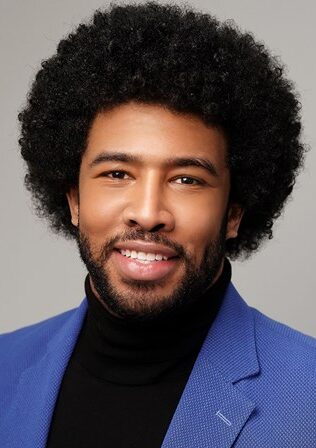 Politico reporter Eugene Daniels (pictured) is scheduled to become president of the White House Correspondents’ Association, only the second Black journalist to hold that position since the organization’s founding in 1914. He is also an “out LGBTQ+ person,” as Ted Johnson reported last year for Deadline.
Politico reporter Eugene Daniels (pictured) is scheduled to become president of the White House Correspondents’ Association, only the second Black journalist to hold that position since the organization’s founding in 1914. He is also an “out LGBTQ+ person,” as Ted Johnson reported last year for Deadline.
The first Black president of the association was Bob Ellison of American Urban Radio Network, president in 1990-91. He died at 67 in 2010.
The WHCA is best known for staging the annual White House Correspondents’ Dinner, attended by presidents who take a ribbing from comedians, but it also awards scholarships and fights for journalists’ access to information. The president is the face of the organization.
“The White House Correspondents’ Association exists to promote excellence in journalism as well as journalism education, and to ensure robust news coverage of the president and the presidency,” the group states. “We support awards for some of the best political reporting of the past year, and scholarships for young reporters who carry our hopes for vibrant journalism in the years to come. Each day, we work to ensure that the men and women who cover the White House have the ability to seek answers from powerful officials, up to and including the President.”
Daniels, 33, quickly identifiable by his Afro, is to assume the presidency in 2024-25 by a circuitous route. CNN’s Kaitlan Collins was elected to an at-large seat on the WHCA board in July and to the presidency for 2024-25. But last month, her network named Collins to co-anchor a new morning program, based in New York, with Don Lemon and Poppy Harlow.
In the same July election in which Collins was chosen president-elect, Daniels won unopposed for the board’s New Media seat, with 398 votes.
 “Based on the results of the most recent election, Eugene Daniels (at left with an earlier look) received the most votes, other than Ms. Collins, at the time of his election to the Board,” current president Tamara Keith of NPR wrote members on Sept. 24.
“Based on the results of the most recent election, Eugene Daniels (at left with an earlier look) received the most votes, other than Ms. Collins, at the time of his election to the Board,” current president Tamara Keith of NPR wrote members on Sept. 24.
“He would, therefore, be expected to assume the role of Treasurer during his third year on the Board at the same time that Ms. Collins would assume the role of President. However, because Ms. Collins is unable to assume that role, Mr. Daniels, as the person receiving the most votes, other than Ms. Collins, at the time of his election to the Board, would be entitled to assume the position of President for the 2024-2025 term.”
Daniels wrote WHCA members, “To all of you, my incredible White House colleagues, I understand this is not the position for which you voted for me to serve. But please know I will spend every second on this board earning your support, and most importantly your trust in the weeks, months and years to come.
“A younger version of myself could never have imagined one day working alongside such talented journalists, let alone serving in this important role for all of you. I am both humbled and full of excitement to serve and for all that we will do together.
“The importance of a free press, access to our elected leaders, and essential fact-based reporting about the politicians, policy, and people of our country has never been more important.
“Defending these causes is no longer enough, we must advocate for and advance them. . . . “
As Ted Johnson explained last year for Deadline, when Daniels, co-author of Politico’s daily newsletter Playbook, joined MSNBC as a contributor:
“Daniels became co-author of Playbook in January, along with Rachael Bade, Ryan Lizza and Tara Palmeri. He also serves as a White House correspondent, with a special focus on Kamala Harris, First Lady Jill Biden, Second Gentleman Doug Emhoff and emerging power players in Washington. He’s the first Black co-author of the influential newsletter and the first out LGBTQ+ person, and has a frequent presence on Politico Video. He also moderated Politico’s Confronting Inequality Town Hall series that examined inequities in areas such as policing, housing, healthcare, education and employment.”
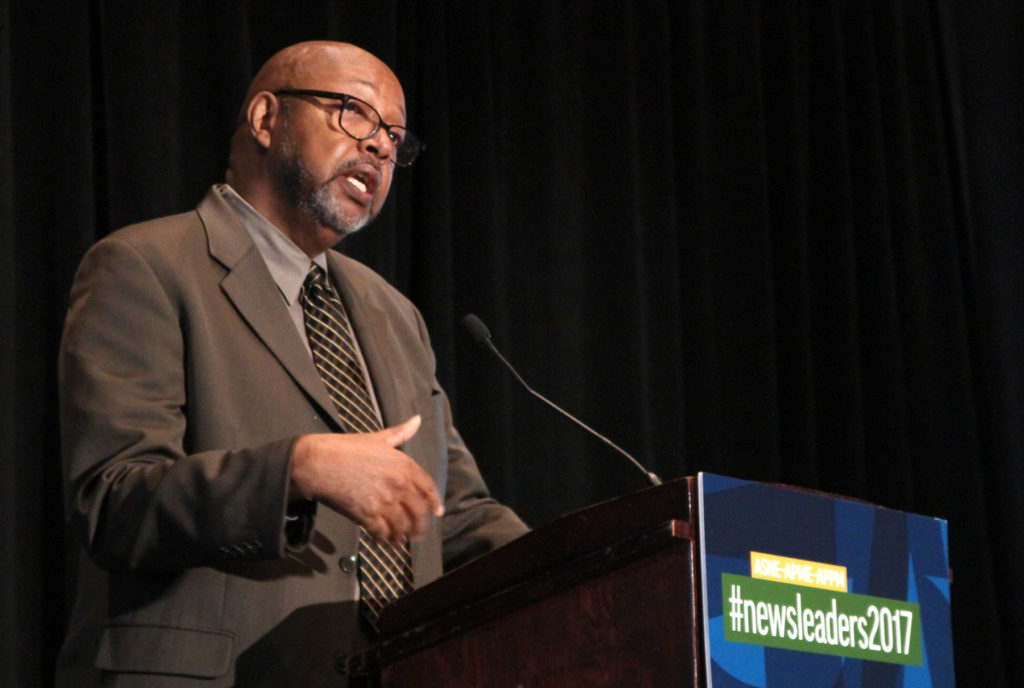
Longtime Columnist Leonard Pitts to Retire
“Pulitzer Prize-winning columnist Leonard Pitts is retiring after more than 30 years,” Connie Ogle reported Sept. 27 for the Miami Herald.
Pitts plans to write his last column on Dec. 14, Ogle continued. His work appeared in “hundreds of news outlets,” Rick DeChantal, sales director at Tribune Content Agency, which syndicates Pitts’ column, told Journal-isms. He declined to be more specific “for competitive reasons.” DeChantal and Herald editorial page editor Nancy Ancrum each said they had not chosen a successor.
While news syndicates are tight-lipped about the circulation of their columnists, a 2007 survey by Media Matters for America found Pitts among the top five in the country, the others being George Will, who was first, Kathleen Parker, Ellen Goodman and the late David Broder of the Washington Post.
Ogle continued, “Over the past several years, a divisive period in American history, the nationally syndicated Pitts captured America and its struggles from a progressive point of view. His writing was furious but insightful, ironic but eloquent. It was always compulsively readable.
“Now Pitts, who was hired by the Herald in 1991 and will be 65 in October, is retiring. It’s time, he said.
“ ‘There’s a certain sense of emotional investment that goes into writing a column,’ he said. ‘And I’m emotionally exhausted.’
“Among Pitts’ nationally famous columns was his fiery response to 9/11 (‘Did you want to tear us apart?’ he demanded of the terrorists. ‘You just brought us together.’) He wrote about the 50th anniversary of the march across the Edmund Pettus Bridge in Selma, Alabama. White poverty and the devastating effects of opioids. Neo-Nazis vomiting hatred in Charlottesville. He drew fans and critics from across the political spectrum and never let those he saw as a threat to democracy off easy.
“That always included the most powerful political figures in the country. One column, which ran with the headline ‘Mr. President: “Just who the hell do you think you are?” drew anger — and much applause from readers.
“Born and raised in Los Angeles, educated at the University of Southern California and a die-hard L.A. Lakers fan, Pitts is a three-time recipient of the National Association of Black Journalists’ Award of Excellence and was chosen NABJ’s 2008 Journalist of the Year. In 2016, the National Society of Newspaper Columnists named him to its Hall of Fame. In 2002 and in 2009, GLAAD Media awarded Pitts the Outstanding Newspaper Columnist award. In 2017, he was awarded the prestigious Missouri Honor Medal for ‘distinguished service to journalism.’ He won a Pulitzer Prize for commentary in 2004.
In L.A., Latinos Question Station’s Commitment
“KTLA-TV Channel 5 is defending its handling of the departure of two popular anchors amid calls by viewers to boycott the station and criticism that station executives have been insensitive to concerns about a shortage of Latinos on air,” Meg James wrote Sept. 27 for the Los Angeles Times.
 “For nearly two weeks, KTLA has endured a backlash from angry viewers over the exit of Lynette Romero (pictured) — the station’s most prominent Latina — and her co-anchor on weekend morning shows, Mark Mester. He was fired last Thursday after an emotional on-air appeal, accusing his bosses of cruel treatment toward viewers and Romero, which the station’s management denies.
“For nearly two weeks, KTLA has endured a backlash from angry viewers over the exit of Lynette Romero (pictured) — the station’s most prominent Latina — and her co-anchor on weekend morning shows, Mark Mester. He was fired last Thursday after an emotional on-air appeal, accusing his bosses of cruel treatment toward viewers and Romero, which the station’s management denies.
“The young co-anchor hired a small plane to buzz around the station’s Sunset Boulevard home in Hollywood with a banner reading: ‘We love you Lynette!’
“After working at KTLA for nearly 24 years, Romero is joining rival KNBC-TV Channel 4 in October as co-anchor of that station’s early morning newscast. . . .”
“Romero’s departure leaves KTLA without a full-time Latina anchor to serve a market in which Latinos make up nearly 50% of the population. A recent survey by a Latino journalists group showed KTLA has the lowest percentage of Latino on-air talent among TV stations in Los Angeles. Last spring, leaders of CCNMA: Latino Journalists of California requested a meeting with KTLA executives to address the issue. . . .
“A KTLA spokesman declined to comment on the station’s refusal to meet with the group but defended their efforts to diversify the newsroom. . . .”

Rachel Scott asked Vladimir Putin on June 16, 2021, “The list of your political opponents who are dead, imprisoned or jailed is long…and you have now prevented anyone who supports [Alexey Navalny] to run for office. So my question is, Mr. President: What are you so afraid of?”
Emmys Name Scott Top ‘Emerging Journalist’
Rachel Scott, congressional correspondent for ABC News, was named “Outstanding Emerging Journalist” last week as the National Academy of Television Arts & Sciences awarded News and Documentary Emmys. The honors [PDF] were dominated by ABC and Vice News, with eight awards each.
It was the first year for the “emerging journalist” award, and the judges did not list a reason for Scott’s selection. But during the nomination year, 2021, Scott was praised in the journalism world for challenging Russian President Vladimir Putin during a news conference after a meeting with President Biden. When Putin did not sufficiently answer her question, she called out Putin in her follow-up, saying, ‘You didn’t answer my question, sir. If all of your political opponents are dead or in prison, poisoned, doesn’t that send a message that you do not want a fair political fight?’ “
Scott was chosen this year to co-host the Hall of Fame awards for the National Association of Black Journalists. NABJ said then, “Scott covered the unprecedented insurrection on Capitol Hill in January 2021 and has been recognized for detailing the disparity in law enforcement’s response to the insurrectionists compared to the Black Lives Matter protests.”
In 2020, Forbes named Scott, then 27, to its “30 under 30” list in media.
Other Emmy awards, excluding those for Spanish-language media, included:
- Two for ABC News’ “Soul of a Nation” series, described as “a six-episode newsmagazine focusing on life in Black communities in present-day America.” Its “Miss Lucille” episode was executive produced by Marie Nelson and hosted by Sterling K. Brown.
- “CBS Mornings”/”CBS This Morning,” executive produced by Shawna Thomas, as “outstanding live news program.”
- “Meet the Press” on NBC, “outstanding news discussion and analysis,” for “Schools, America and Race.”
- The New York Times, “outstanding arts, culture or entertainment coverage,” for “Malfunction: The Dressing Down of Janet Jackson”
- The Outlaw Ocean Project and The Guardian, “outstanding crime and justice coverage” for “Get Away from the Target” — Rescuing Migrants from the Libyan Coast Guard”
- CNN, for “Ethiopia: Exposing the Hallmarks of a Genocide,” “outstanding research: News”
- “My Name Is Anjanette Young,” from WBBM-TV in Chicago, for “outstanding regional news story: Investigative report.” Young was victim of a wrong raid by Chicago police.
- HBO for “Street Gang: How We Got to Sesame Street,” about the origins of the pioneering public television institution modeling diversity in children’s programming, “outstanding arts and culture documentary.”
- “Frontline and Ado Ato Pictures, PBS, for “Un(re)solved,” “outstanding interactive media: Innovation.” PBS describes the effort as “a multiplatform investigation by FRONTLINE with Ado Ato Pictures, StoryCorps, Black Public Media, the Northeastern University Civil Rights and Restorative Justice Project, PBS and GBH [WGBH in Boston]. The project examines a federal effort to grapple with America’s legacy of racist killings through the Emmett Till Unsolved Civil Rights Crime Act. . . .”
- “A Thousand Cuts,” “outstanding social issue documentary” from PBS’ “Frontline.” The feature-length documentary chronicled how journalist Maria Ressa became a prime target of then-Philippine President Rodrigo Duterte’s war on the press, and how she and her news organization, Rappler, responded.
- CNN Films for “Outstanding Graphic Design and Art Direction: Documentary” for “Dreamland: The Burning of Black Wall Street.”
Marcus Mabry Named a Digital SVP at CNN
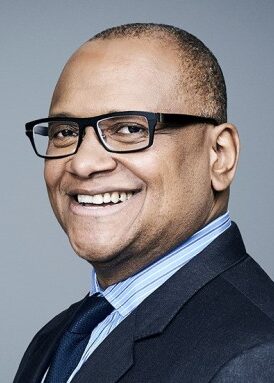 Marcus Mabry, a six-year veteran of CNN who came to the network after stints at the New York Times, Newsweek and Twitter, last week was promoted to SVP of digital editorial and programming.
Marcus Mabry, a six-year veteran of CNN who came to the network after stints at the New York Times, Newsweek and Twitter, last week was promoted to SVP of digital editorial and programming.
“In this role, Marcus will lead the Digital Global Programming, Features and Visuals teams, including Opinion, CNN Style and CNN Travel, and continue to represent Digital Editorial on the digital leadership team across the business,” CNN vice president Wendy Brundige announced Sept. 27.
“After joining CNN six years ago as the director of mobile, Marcus has pushed us to be audience centric, championing a diverse range of voices and views in our work and in our staff. Our audience and engagement have grown under his leadership – from #4 in mobile audience among our competitive set to #1. Countless journalists on our teams have benefited from his mentorship and guidance.
“Marcus’s award-studded career includes leading and innovating at Twitter and The New York Times, international assignments in London, Paris and Johannesburg, and leading US and foreign correspondents at Newsweek. He speaks fluent French and in his spare time has written two books.”
Mabry said in a statement, “This is an honor. Not many boys raised by a single mom in Trenton get to occupy these positions of responsibility in American journalism.”
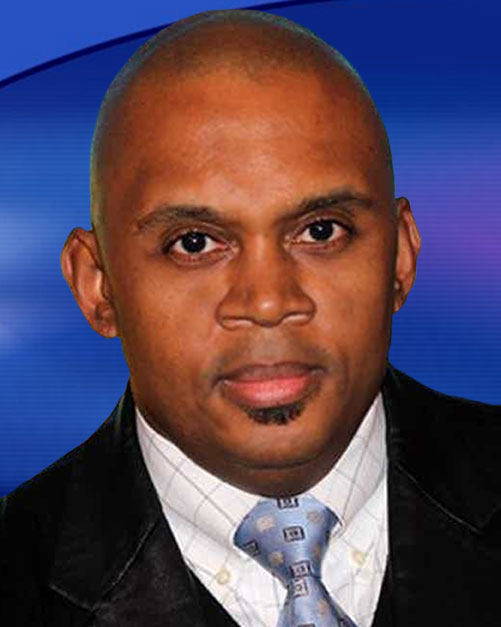 Separately, CNN named Jamie Foster (pictured) a former news director at WJLA in Washington and WATE in Knoxville, Tenn., among other positions, as vice president, Talent Recruitment & Development, with a focus on off-air editorial talent.
Separately, CNN named Jamie Foster (pictured) a former news director at WJLA in Washington and WATE in Knoxville, Tenn., among other positions, as vice president, Talent Recruitment & Development, with a focus on off-air editorial talent.
Foster reports to Ramon Escobar, senior vice president for talent recruitment and development. Escobar said of Foster, “He will be CNN’s main liaison to our corporate talent acquisition partners. He will also help lead our development efforts which include internal and external journalism workshops focused on developing news producers and journalists.”
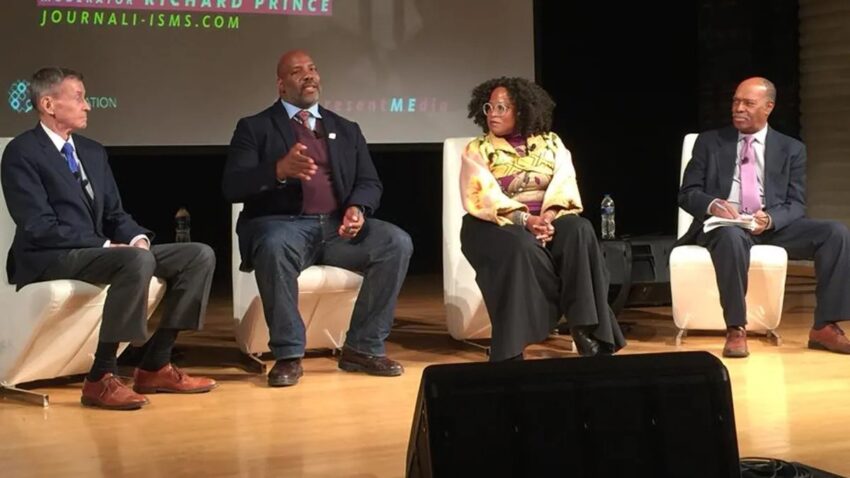
From left, Bill Plante, Jelani Cobb, Marie Nelson and Richard Prince at Ford Foundation panel in Detroit, 2018.
Plante Saw Most TV News as ‘Headline Service’
In 2018, this columnist was honored to moderate a Ford Foundation discussion in Detroit on the 50th anniversary of the Kerner Commission report on causes of the racial uprisings of the 1960s, the news media being one of those causes.
Bill Plante of CBS News, who died Sept. 28 at 84, was one of the panelists, along with Jelani Cobb, now Columbia Journalism School dean, and Marie Nelson, now senior vice president at ABC News. (video)
Plante later messaged Journal-isms, “When I joined CBS News in New York in June, 1964 there was one Black reporter at New York headquarters – Ben Holman. He was not on the Evening News staff; he was what was then called a ‘reporter-assignment editor,’ as was I. I don’t recall there being any people of color on the Evening News staff, but I wasn’t working directly with them.
“Holman went on to a distinguished teaching career . . .
Then, in August, Plante told this column in response to a discussion of “objectivity“ (video):
“Seems to my (fading) memory that in the 60’s, broadcast journalism took itself very seriously – held it up to newspaper standards. But that didn’t make it any less dismissive of race and people of color on an everyday basis.
“On the other hand, stories like the Vietnam war and the Civil Rights movement were covered as serious news. I covered both, and remember that at the time, I believed they were very important for the national dialogue.
“I certainly agree that the quality of tv news has declined since then, but that’s for many reasons. . . .
“So, kinda depends on what you mean by ‘objective.’ Did everyday coverage fairly represent the population? No. But some major issues were covered.”
Asked how the quality of television news had declined, Plante wrote, “The late Johnny [R.W.] Apple of The NY Times worked for NBC Nightly News in the 60’s. He said that he left when they began insisting that sound bites couldn’t be longer than 20 seconds. It’s been downhill from there!
“TV News was serious way back then — not socially ‘woke,’ but believing that it had to cover national and world affairs.
“But over the years programmers measured audience reaction and gradually stopped running stories no one seemed to care about. And over time, the more sensational the story, the more likely it would be programmed. The advent of social media has meant that anything with video is likely to show up on network news.
“There have been attempts to increase the quality of coverage — when Scott Pelley anchored the CBS Evening News he covered a lot more overseas news. PBS NewsHour routinely does as well — and is often criticized for being boring.
“What we have 50 years later on most news broadcasts is a headline service.”
Short Takes
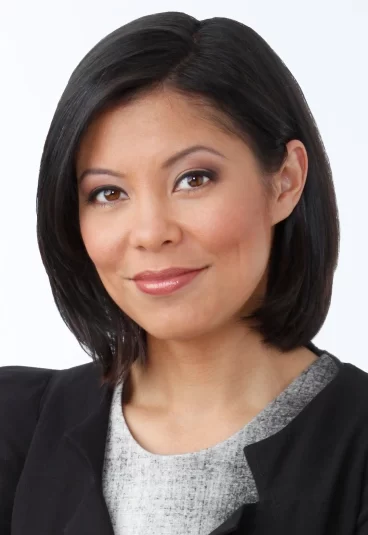 “In September, on evenings ‘Alex Wagner (pictured) Tonight’ aired, MSNBC saw a stunning year-over-year drop from 2021,” when Rachel Maddow hosted,” Oliver Darcy reported Tuesday for CNN. The “drop in viewers must certainly be distressing to executives at 30 Rock. As one former television executive told me, ‘It’s way worse than: we don’t expect [Wagner] to perform at Rachel levels,’ describing the ratings plunge as ‘brutal’ and ‘very troubling.’ . . .”
“In September, on evenings ‘Alex Wagner (pictured) Tonight’ aired, MSNBC saw a stunning year-over-year drop from 2021,” when Rachel Maddow hosted,” Oliver Darcy reported Tuesday for CNN. The “drop in viewers must certainly be distressing to executives at 30 Rock. As one former television executive told me, ‘It’s way worse than: we don’t expect [Wagner] to perform at Rachel levels,’ describing the ratings plunge as ‘brutal’ and ‘very troubling.’ . . .”
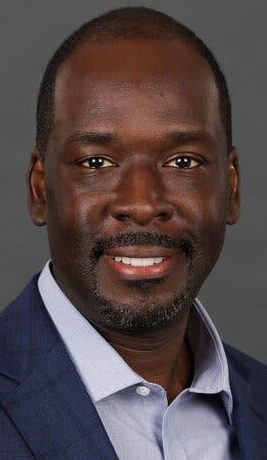 “New York Public Radio has a new leader after a monthslong national search: LaFontaine Oliver (pictured), a veteran public radio executive,” Katie Robertson reported Tuesday for the New York Times. “Mr. Oliver is currently the president and chief executive of Baltimore’s flagship public radio station, WYPR, which recently entered a joint operating agreement with The Baltimore Banner, a new digital news website. He has been on the board of NPR since 2016 and is in his second term as the chair of NPR’s board of directors. . . .”
“New York Public Radio has a new leader after a monthslong national search: LaFontaine Oliver (pictured), a veteran public radio executive,” Katie Robertson reported Tuesday for the New York Times. “Mr. Oliver is currently the president and chief executive of Baltimore’s flagship public radio station, WYPR, which recently entered a joint operating agreement with The Baltimore Banner, a new digital news website. He has been on the board of NPR since 2016 and is in his second term as the chair of NPR’s board of directors. . . .”

- “The U.S. Postal Service recognized the centennial birth of cartoonist Charles M. Schulz with a first-day-of-issue ceremony on Friday, unveiling a pane of 20 new Forever stamps at the Charles M. Schulz Museum and Research Center,” the Postal Service announced on Monday. Schultz’s Black character, Franklin, is at top, third from left. “After the assassination of the Rev. Dr. Martin Luther King in 1968, Harriet Glickman, then a special education teacher in California, decided that it might be time for Charlie Brown and company to make a new friend, a friend that might help move the country toward the beloved community the slain Civil Rights leader was working toward,” Denise Clay wrote in 2015 for the old AllDigitocracy website. After some hesitancy. Schulz agreed. “On July 31, 1968, America met Franklin, a black kid who brought Charlie Brown the beach ball his sister Sally had thrown into the ocean. The two boys then built a sand castle, talked about baseball, and shared stories of family and friends like any two kids would. He was just one of the gang. That, Glickman says, was the point. . . .”
 “Natalie Morales (pictured) has been named a correspondent at CBS News,” Michael Malone reported Monday for nexttv.com. “She starts November 1 and will work on 48 Hours, CBS Mornings, CBS Sunday Morning and other CBS programs. Morales is a host on the CBS daytime show The Talk, and will continue in that role. . . . Morales was the West Coast anchor for NBC’s Today prior to joining CBS in 2021, was a correspondent for Dateline NBC and anchored Behind Closed Doors with Natalie Morales on Reelz.”
“Natalie Morales (pictured) has been named a correspondent at CBS News,” Michael Malone reported Monday for nexttv.com. “She starts November 1 and will work on 48 Hours, CBS Mornings, CBS Sunday Morning and other CBS programs. Morales is a host on the CBS daytime show The Talk, and will continue in that role. . . . Morales was the West Coast anchor for NBC’s Today prior to joining CBS in 2021, was a correspondent for Dateline NBC and anchored Behind Closed Doors with Natalie Morales on Reelz.”

- “Officials in charge of enforcing safe operations at city jails recently shared never-before-seen photos and videos from Rikers Island with assistant district attorneys in Manhattan, giving the very prosecutors who file criminal charges and request bail an unprecedented look at the squalid and deadly conditions in which defendants are held,” Matt Katz wrote Sept. 28 for Gothamist. “The shocking August presentation, obtained by Gothamist through a public information request, was prepared by the Board of Correction, which oversees and regulates the Department of Correction, for hundreds of prosecutors at the invitation of Manhattan DA Alvin Bragg. It shows: A man defecating in his shorts due to a lack of toilets in the intake area and then being left in his soiled clothes for 11 hours until another incarcerated person — not jail staff — brought him new clothes; a detainee locked in a cage shower for nearly 24 hours before he injured himself; and incarcerated people dragging sick people to medical care, and even administering chest compressions themselves, because assigned officers weren’t present. . . .”
- “Most search warrants issued in Greenville, Miss., were no-knock warrants, which allow law enforcement to barge into someone’s home unannounced, public defender Merrill Nordstrom discovered,” Caleb Bedillion of the Northeast Mississippi Daily Journal reported Tuesday, in conjunction with ProPublica’s Local Reporting Network. “She suspected that many of those raids violated the Fourth Amendment’s protection against unreasonable searches. . . . An investigation by the Northeast Mississippi Daily Journal and ProPublica has found that almost two-thirds of Mississippi’s county-level justice courts prevent access to some or all search warrants and related documents. So do municipal courts in at least five of the state’s 10 largest cities, including Jackson, the capital. . . .”
 “Amara Walker (pictured), a CNN correspondent, will co-anchor the cable-news outlet’s weekend morning program, currently known as ‘New Day,’ filling a role left vacant in June when Christi Paul decided to leave the network,” Brian Steinberg reported Tuesday for Variety. “Walker has reported on such events as the 2021 Atlanta spa massacre and co-hosted a primetime special with Anderson Cooper, Victor Blackwell, and Ana Cabrera, called ‘Afraid: Fear in America’s Communities of Color.’ ” She speaks conversational Korean and Spanish.
“Amara Walker (pictured), a CNN correspondent, will co-anchor the cable-news outlet’s weekend morning program, currently known as ‘New Day,’ filling a role left vacant in June when Christi Paul decided to leave the network,” Brian Steinberg reported Tuesday for Variety. “Walker has reported on such events as the 2021 Atlanta spa massacre and co-hosted a primetime special with Anderson Cooper, Victor Blackwell, and Ana Cabrera, called ‘Afraid: Fear in America’s Communities of Color.’ ” She speaks conversational Korean and Spanish.
- “News of Ime Udoka’s lengthy suspension from the Boston Celtics has dominated the internet since the NBA franchise announced last week that he had violated team policies,” Char Adams wrote Friday for NBC News. “But amid the articles and social media posts about the situation, many are wondering why the head coach’s personal indiscretions are receiving more attention than seemingly larger ethical misdeeds going on in the news cycle, like Hall of Fame quarterback Brett Favre’s role in the Mississippi welfare scandal. . . .”
- “Scientists agree that developed nations need to eat less meat and shift to a plant-based diet, according to a new study in the journal Sustainability, but newspapers cover the issue as an open debate,” Jeff McMahon wrote Sunday for Forbes. “Newspaper coverage of dietary change is reminiscent of widely criticised coverage of climate change earlier in this century, the study says, which presented the human causes of global warming as debatable long after scientists had reached consensus. . . .”
- Kim Godwin, president of ABC News, Chesley Maddox-Dorsey, chief executive officer of American Urban Radio Networks, and Dawn Porter, founder, Trilogy Films, are among eight honorees for the Gracies Leadership Awards on Nov. 14, the Alliance for Women in Media announced.
- “Mark Pedowitz leaves an impressive legacy at The CW after an 11-year run in which he championed diversity and worked tirelessly to transform the broadcast network into a home of year-round programming. The question now becomes if Pedowitz’s successor — former Nexstar board member Dennis Miller — will embrace or erase it,” Lesley Goldberg wrote Monday for the Hollywood Reporter. Goldberg also wrote, “This season, 63 percent of CW’s showrunners, exec producers, writers and directors are women or people of color, while 47 percent of the network’s series regulars are women and 49 percent are people of color (up from 41 percent last season). . . . “

- “New York Magazine’s September 26–October 9, 2022 issue, ‘At Home in Asian America: Who Are We Becoming?’ is an editorial package examining the Asian American condition as it undergoes a series of profound transformations,” Priyanka Mantha wrote in introducing the issue. “The cover art, titled ‘I Am Not the Kung Flu,’ by artist Susan Chen from her 2021 exhibition ‘I Am Not a Virus,’ is part of a series of paintings created over Zoom during the pandemic. The self-portrait was inspired by Chen’s survey of several Asian American community groups focused on what they were buying to protect themselves from violence. The painting, in which Chen wears a mask and a post-vaccine Band-Aid on her arm as visual references to the pandemic-driven rise in fear of anti-Asian violence, displays the most commonly sought after items like pepper spray and tasers, as well as a Feng Shui Bagua mirror, recommended to her by many in the community as a way to deflect bad energy. . . .”
- The multicultural management team at the Chicago Sun-Times — Nykia Wright, CEO; Jennifer Kho, executive editor, and Celeste LeCompte, Chicago Public Media chief audience officer, announced Thursday, “We are dropping our paywall and making it possible for anyone to read our website for free by providing nothing more than an email address. Instead of a paywall, we are launching a donation-based digital membership program that will allow readers to pay what they can to help us deliver the news you rely on. . . .”
 Hugo Balta (pictured) has become director of communications for the Chicago-based Latino Policy Forum, which envisions societal prosperity, unity and equity in our nation and in the global community,” Balta announced Saturday. The two-time president of the National Association of Hispanic Journalists remains owner and publisher of the Latino News Network in Connecticut and associate editor of the Chicago Reporter.
Hugo Balta (pictured) has become director of communications for the Chicago-based Latino Policy Forum, which envisions societal prosperity, unity and equity in our nation and in the global community,” Balta announced Saturday. The two-time president of the National Association of Hispanic Journalists remains owner and publisher of the Latino News Network in Connecticut and associate editor of the Chicago Reporter.
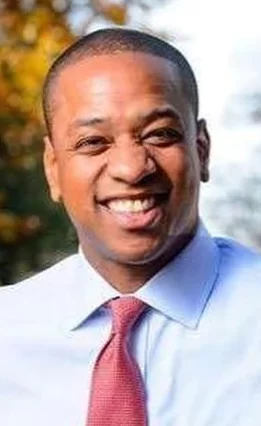 Author and commentator Sophia A. Nelson is apologizing for joining the chorus that cost former Virginia lieutenant governor Justin Fairfax (pictured) his political career. In 2019, two women accused Fairfax of sexual assault decades prior. “Fairfax has been appearing on any platform that will have him to clear his name. Unfortunately, he has had very few takers,” Nelson wrote Friday for The Washington Post. “Like millions of women, I bought into the sensationalism. The sordid tale of alleged violence and Machiavellian political intrigue. . . .Now, I see how cruel what we did to Fairfax and his family was. He was presumed guilty. He was labeled a ‘rapist.’ He received no due process. No trial. No hearings. No investigation. He could not clear his name. To this day, he’s still trying. That is the point: Once we get whipped into a media frenzy, common sense goes out the window. . . .”
Author and commentator Sophia A. Nelson is apologizing for joining the chorus that cost former Virginia lieutenant governor Justin Fairfax (pictured) his political career. In 2019, two women accused Fairfax of sexual assault decades prior. “Fairfax has been appearing on any platform that will have him to clear his name. Unfortunately, he has had very few takers,” Nelson wrote Friday for The Washington Post. “Like millions of women, I bought into the sensationalism. The sordid tale of alleged violence and Machiavellian political intrigue. . . .Now, I see how cruel what we did to Fairfax and his family was. He was presumed guilty. He was labeled a ‘rapist.’ He received no due process. No trial. No hearings. No investigation. He could not clear his name. To this day, he’s still trying. That is the point: Once we get whipped into a media frenzy, common sense goes out the window. . . .”
- “Because of historical denialism, it was reported in some places that New York Yankees slugger Aaron Judge on Tuesday broke Major League Baseball’s single-season home run record with his 62nd blast.,” Kevin B. Blackistone wrote Wednesday for The Washington Post. “He didn’t. The record is 73, set by should-be Hall of Fame outfielder Barry Bonds on Oct. 7, 2001. Much of the sports journalism profession should regret the error. . . .”
- . . . . Blackistone was a producer of “Imagining the Indian: The Fight Against Native American Mascoting,” a documentary that examines the movement that is ending the use of Native American names, logos, and mascots in the world of sports and beyond.” It won the award for best full-length documentary at the 4th Annual Morehouse College Human Rights Film Festival, which took place Sept. 20-24.
- Kevin Powell, poet, journalist and author, will be the second writer-in-residence of the Toni Morrison Writing Program, Prairie View A&M University announced Sept. 8. “One of the most celebrated African American poets, Nikki Giovanni, wrapped up her appointment as the program’s inaugural writer-in-residence this spring,” the university said.
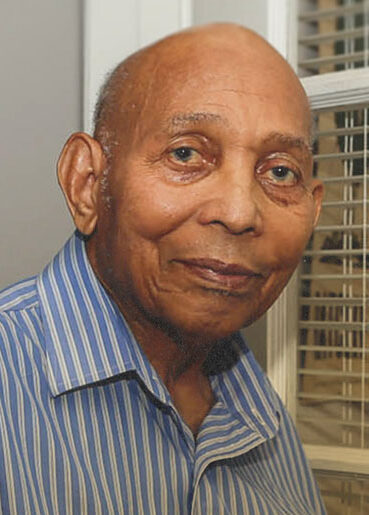 “What prompted Dr. Willie Ratcliff (pictured), an owner of a construction firm that had over 500 Black employees at its peak, to pivot away from his business and risk his financial security in order to fight for civil rights in San Francisco? His belief in the power of journalism,” Meaghan Mitchell wrote Sept. 25 for the San Francisco Standard. “The longtime publisher of the San Francisco Bay View was also driven by his passion for the Black community that once ruled San Francisco’s southeast. . . . With the recently launched SF Bay View Community Journalism Lab, Ratcliff, now 90, is passing the baton and encouraging Black writers and photographers to join his latest project. The newspaper wants to hire ‘community journalists’ to hone their writing and photography skills, report on issues affecting their community, and advance their careers. The fellowship will be led by local journalist and Bayview-Hunters Point native D’Wana Stewart. . . .”
“What prompted Dr. Willie Ratcliff (pictured), an owner of a construction firm that had over 500 Black employees at its peak, to pivot away from his business and risk his financial security in order to fight for civil rights in San Francisco? His belief in the power of journalism,” Meaghan Mitchell wrote Sept. 25 for the San Francisco Standard. “The longtime publisher of the San Francisco Bay View was also driven by his passion for the Black community that once ruled San Francisco’s southeast. . . . With the recently launched SF Bay View Community Journalism Lab, Ratcliff, now 90, is passing the baton and encouraging Black writers and photographers to join his latest project. The newspaper wants to hire ‘community journalists’ to hone their writing and photography skills, report on issues affecting their community, and advance their careers. The fellowship will be led by local journalist and Bayview-Hunters Point native D’Wana Stewart. . . .”
(video blocked on Microsoft Edge browsers)
- Walt Carr has celebrated his 90th birthday after 60 years of cartooning. He writes Journal-isms, “After 29 years, I shut down the weekly editorial cartoon service this past June. However, I told the papers that whenever I get the urge, if sumthin’ pisses me off enough, I’ll draw a cartoon and they can print it — no charge. Done it once already. The party was on my birthday, August 26 — had about 185 guests. Putting that invitation list together was extremely stressful. I know too many people.” At the January Journal-isms Roundtable, Carr said race prompted him to switch from gag cartoons to more serious fare all those years ago. “I wanted to be a voice. I wanted to point out the hypocrisy that we’ve been dealing with all these years.” Carr joined others in praising the Black press for providing outlets for that perspective, such as the “Strictly for Laughs” page in Ebony magazine, which featured his cartoons and those of Ray Billingsley, now of “Curtis.”
- DuJuan McCoy, owner, president and CEO of Circle City Broadcasting, is backing a Multicultural Media Producing Program, “a one-year certificate program at Ivy Tech Community College (Indianapolis) focused on producing local news,” Michael Malone reported in September for nexttv.com. “The program is a partnership between the DuJuan and Tina McCoy Foundation, Circle City Broadcasting and JP Morgan Chase Foundation. MMPP is open to students of all backgrounds but will focus on ensuring multicultural and underserved individuals have access to it. . .”

- Detroit morning anchor Evrod Cassimy, who as a singer recorded a Christmas album and opened last year for Boys II Men, is leaving WDIV after 9 years. “As many of you know I’m originally from Chicago and I’m returning home to work for WMAQ, the NBC station there, as an anchor/reporter,” Cassimy told viewers on Sept. 22, updated Sept. 23.
 Health reporter Candice Wilder, economics reporter Olivera Perkins and criminal justice reporter Stephanie Casanova are among new hires at the Ohio Local News Initiative’s Signal Cleveland, the group announced Sept. 22. The initiative was “formed by a coalition of Ohio-based organizations and the American Journalism Project. We are on a mission to provide local news for Ohio, starting in Cleveland, that is anchored in and reflective of the needs of the communities they serve,” the group says. Editor Lila Mills (pictured) wrote that the outlet is still hiring and explained that “Signal Cleveland” “is first a nod to Garrett Morgan, the noted Cleveland inventor and businessman, who came to Cleveland to make his name in 1895. Morgan made his fortune in Cleveland with a series of successful inventions, including the three-position traffic signal that later became the three light traffic signal we use today. Morgan also started The Call newspaper in 1916, which later merged to become The Call and Post, an influential newspaper in Cleveland, and eventually all of Ohio. . . .”
Health reporter Candice Wilder, economics reporter Olivera Perkins and criminal justice reporter Stephanie Casanova are among new hires at the Ohio Local News Initiative’s Signal Cleveland, the group announced Sept. 22. The initiative was “formed by a coalition of Ohio-based organizations and the American Journalism Project. We are on a mission to provide local news for Ohio, starting in Cleveland, that is anchored in and reflective of the needs of the communities they serve,” the group says. Editor Lila Mills (pictured) wrote that the outlet is still hiring and explained that “Signal Cleveland” “is first a nod to Garrett Morgan, the noted Cleveland inventor and businessman, who came to Cleveland to make his name in 1895. Morgan made his fortune in Cleveland with a series of successful inventions, including the three-position traffic signal that later became the three light traffic signal we use today. Morgan also started The Call newspaper in 1916, which later merged to become The Call and Post, an influential newspaper in Cleveland, and eventually all of Ohio. . . .”
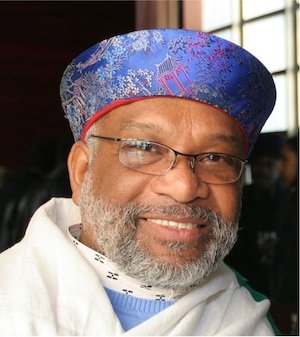 Chester Higgins Jr. (pictured), author and photojournalist who retired from the New York Times in 2014, is to be inducted into the International Photography Hall of Fame at a ceremony Nov. 4 in St. Louis.
Chester Higgins Jr. (pictured), author and photojournalist who retired from the New York Times in 2014, is to be inducted into the International Photography Hall of Fame at a ceremony Nov. 4 in St. Louis.
- Jemele Hill, Atlantic magazine contributor and former ESPN host, and Sam Sanders, who recently left his perch at NPR, are among “The 40(ish) Most Powerful People in Podcasting,” as determined Wednesday by the Hollywood Reporter.
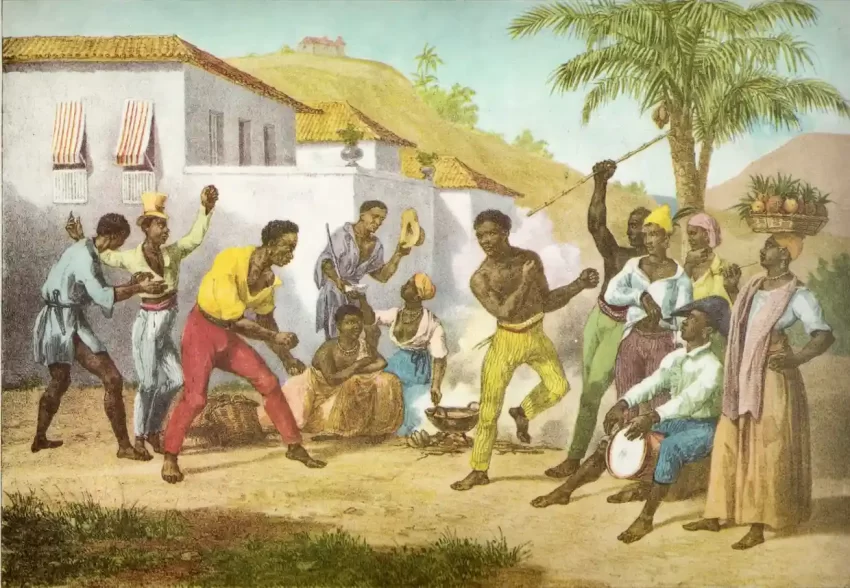
- Brazilian journalist Tiago Rogero has produced “a trilogy of podcasts celebrating Black lives and Black matters – the Black people, struggles and achievements that had been airbrushed from the history of a country that is more than 50% Black,” Tom Phillips reported Thursday for the Guardian. “The most recent of those podcasts – the Querino Project – calls itself a Brazilian answer to the New York Times’s 1619 Project, which rethought US history through the prism of slavery and the key role Black citizens had in shaping that nation. ‘It’s a story Brazil never wanted to tell but instead wanted to suppress,’ said Rogero, 34, whose earlier podcasts were called Negra Voz (Black Voice) and Vidas Negras (Black Lives).”
- “To counteract hate narratives and the invisibilization suffered by Indigenous, Afro-descendant and Black communities in Latin America, journalists must give a voice to these populations, know their realities in depth and avoid their re-victimization,” César López Linares reported Sept. 13 for the Knight Center for Journalism in the Americas. “Those were some of the recommendations given by the guests of the panel ‘Indigenous Peoples and Afro-descendant populations in Latin America.’ It was the first panel of the 2nd Latin American Conference on Diversity in Journalism of the Knight Center for Journalism in the Americas, which was held online on Sept. 9 and 10.” Separately, the center announced Thursday, “We’ve just received a $4 million grant from the John S. and James L. Knight Foundation that will help us to reorganize, expand and strengthen our operations.”
- “In the last two months, at least 12 Cuban journalists have decided to quit their jobs or leave the profession publicly as a result of the harassment they have suffered at the hands of Cuban State Security,” Katherine Pennacchio reported Sept. 26 for LatAm Journalism Review. She also wrote, “According to Cuban journalists and Cuban media, agents of the Department of State Security demanded that journalists publicly resign under the threat that, if they do not comply with their demands, they would be tried and sent to prison, under the terms of the new Criminal Code that will come into effect on Dec. 1. . . .”
- “Ethiopia is becoming ‘Africa’s world war’ with tens of thousands of deaths in the last few months potentially going unreported as Tigrayan rebels battle a coalition of armies and militias in a media blackout.” Will Brown, Lucy Kassa and Zecharias Zelalem reported Monday for the Telegraph in London. “The conflict now involves hundreds of thousands of troops with both sides claiming the other is using ‘human wave’ tactics to take positions and is likely the ‘deadliest war in the world,’ according to analysts. . . .”
- When President George Weah of Liberia “told world leaders at the 77th UN General Assembly in New York that his administration had eradicated laws that in the past suppressed freedom of the press, he was not lying,” the Liberian daily newspaper Front Page Africa editorialized Sept. 28. It also said, “However, these reforms do not mean that the Weah administration has promoted a totally free media, as he wants many to believe. In an environment where criticism of the government and government officials is a normal part of public discourse, this government has found ways to outrightly silence or significantly suppress the impact of some of the most compelling voices in the media landscape. . . .”
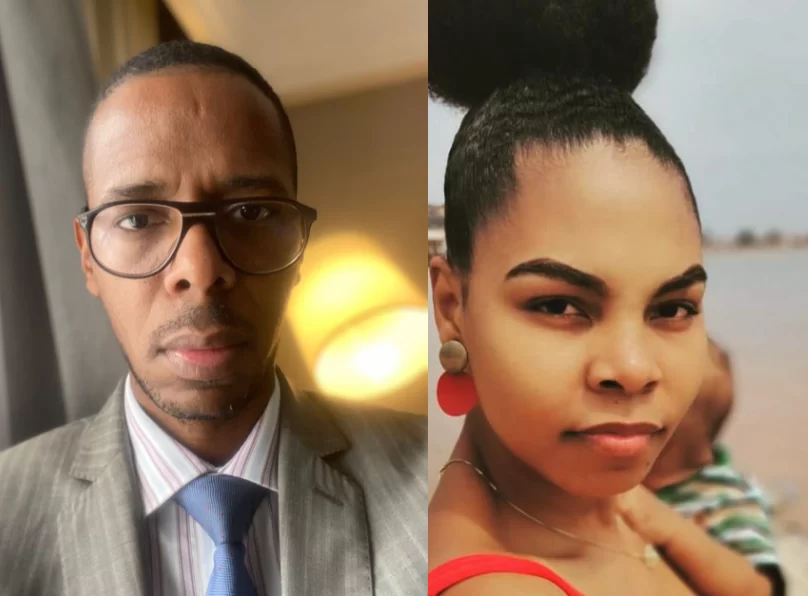 “Angolan authorities must swiftly investigate and bring to justice those responsible for the assault on Ludmila Pinto, the wife of broadcaster Claudio Pinto (both pictured), in an apparent warning to the journalist,” the Committee to Protect Journalists said Tuesday. “The men tied Ludmila Pinto’s arms and legs with a clothesline and repeatedly slapped her, punched her stomach, and kicked her all over her body while also threatening to kill their one-year-old crying son, the journalist told CPJ. One of the attackers went to the kitchen, heated a kitchen knife, and cut Ludmila Pinto at least 16 times on her arms and 12 times on her legs, she told CPJ. The men said they ‘would return to finish the job if her husband did not shut up,’ she said. . ..” (Photos: Claudio Pinto)
“Angolan authorities must swiftly investigate and bring to justice those responsible for the assault on Ludmila Pinto, the wife of broadcaster Claudio Pinto (both pictured), in an apparent warning to the journalist,” the Committee to Protect Journalists said Tuesday. “The men tied Ludmila Pinto’s arms and legs with a clothesline and repeatedly slapped her, punched her stomach, and kicked her all over her body while also threatening to kill their one-year-old crying son, the journalist told CPJ. One of the attackers went to the kitchen, heated a kitchen knife, and cut Ludmila Pinto at least 16 times on her arms and 12 times on her legs, she told CPJ. The men said they ‘would return to finish the job if her husband did not shut up,’ she said. . ..” (Photos: Claudio Pinto)
To subscribe at no cost, please send an email to journal-isms+subscribe@groups.io and say who you are.
Facebook users: “Like” “Richard Prince’s Journal-isms” on Facebook.
Follow Richard Prince on Twitter @princeeditor
Richard Prince’s Journal-isms originates from Washington. It began in print before most of us knew what the internet was, and it would like to be referred to as a “column.” Any views expressed in the column are those of the person or organization quoted and not those of any other entity. Send tips, comments and concerns to Richard Prince at journal-isms+owner@
View previous columns (after Feb. 13, 2016).
View previous columns (before Feb. 13, 2016)
- Diversity’s Greatest Hits, 2018 (Jan. 4, 2019)
- Book Notes: Is Taking a Knee Really All That? (Dec. 20, 2018)
- Book Notes: Challenging ’45’ and Proudly Telling the Story (Dec. 18, 2018)
- Book Notes: Get Down With the Legends! (Dec. 11, 2018)
- Journalist Richard Prince w/Joe Madison (Sirius XM, April 18, 2018) (podcast)
- Richard Prince (journalist) (Wikipedia entry)
- February 2018 Podcast: Richard “Dick” Prince on the need for newsroom diversity (Gabriel Greschler, Student Press Law Center, Feb. 26, 2018)
- Diversity’s Greatest Hits, 2017 — Where Will They Take Us in the Year Ahead?
- Book Notes: Best Sellers, Uncovered Treasures, Overlooked History (Dec. 19, 2017)
- An advocate for diversity in the media is still pressing for representation, (Courtland Milloy, Washington Post, Nov. 28, 2017)
- Morgan Global Journalism Review: Journal-isms Journeys On (Aug. 31, 2017)
- Diversity’s Greatest Hits, 2016
- Book Notes: 16 Writers Dish About ‘Chelle,’ the First Lady
- Book Notes: From Coretta to Barack, and in Search of the Godfather
- Journal-isms’ Richard Prince Wants Your Ideas (FishbowlDC, Feb. 26, 2016)
- “JOURNAL-ISMS” IS LATEST TO BEAR BRUNT OF INDUSTRY’S ECONOMIC WOES (Feb. 19, 2016)
- Richard Prince with Charlayne Hunter-Gault, “PBS NewsHour,” “What stagnant diversity means for America’s newsrooms” (Dec. 15, 2015)
- Book Notes: Journalists Follow Their Passions
- Book Notes: Journalists Who Rocked Their World
- Book Notes: Hands Up! Read This!
- Book Notes: New Cosby Bio Looks Like a Best-Seller
- Journo-diversity advocate turns attention to Ezra Klein project (Erik Wemple, Washington Post, March 5, 2014)
When you shop @AmazonSmile, Amazon will make a donation to Journal-Isms Inc. https://t.co/OFkE3Gu0eK
— Richard Prince (@princeeditor) March 16, 2018

